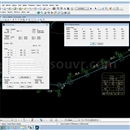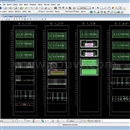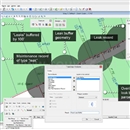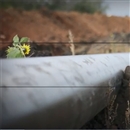Multi-Discipline Rail Station Design and Pedestrian Simulation
Contact us:
TEL: +086-010-50951355 / FAX:+86-010-50951352
Email : cathy@souvr.com / Frank@souvr.com / Robin@souvr.com / sales@souvr.com
Details
Related
Consulting
※Product Overview※
Multi-Discipline Rail Station Design and Pedestrian Simulation
OpenBuildings Station Designer improves design quality by optimizing the functional space layout of the station building and the path of travel for the pedestrian. Design, analyze, visualize, and simulate rail and metro stations of any size, form, and complexity. Create pedestrian simulation scenarios to improve the quality of your station design and facility operations.
OpenBuildings Station Designer provides building information modeling (BIM) advancements so you can deliver station design projects faster and with greater confidence in your design, workflow, capabilities, and deliverables. Effectively communicate design intent and eliminate barriers between building disciplines and geographically distributed teams.

• Multi-discipline: Increase collaboration among architects, mechanical, electrical, and structural engineers with a shared set of tools and workflows
• Interoperability: Integrate information you have from multiple formats and easily work on projects of any size
• Information-rich deliverables: Clearly communicate your design intent with reliable deliverables that you can easily customize
• Unrestrictive design environment: Model anything with total freedom from stations with simple to highly complex geometry and designs
• Building performance: Simulate station buildings and predict real-world performance of the asset quickly and with precision to explore various options for iterative refinement

CAPABILITIES
Analyze building system performance
Simulate real-world performance and evaluate building system performances so you can quickly discover the best design choices. Inform early design decisions with conceptual energy analysis that provides peak loads, annual energy calculations, energy consumptions, carbon emissions, and fuel costs.
Collaborate across multi-discipline teams
Collaborate across multiple disciplines with tools for architectural, electrical, mechanical, and structural systems design in one application. Coordinate your designs better thanks to a common design environment and a streamlined workflow. Resolve clashes with built-in clash detection and share mark-ups of models and documentation across teams to reduce project errors.
Design mechanical, electrical and plumbing systems
Design complex MEP systems. Model fully parametric air-handling, piping, and plumbing systems. Design lighting, power, fire-detection, and other electrical subsystems.
Design station building structures
Model steel, concrete, and timber structures from walls, foundations, and columns to other structural components. Produce plans, framing layouts, sections, and elevations. Integrate with detailing applications, including Bentley's ProStructures.
Design stations and facilities
Develop and design buildings and facilities of any size and complexity with comprehensive architectural capabilities. Produce coordinated architectural documentation directly from the building model. Create floor plans, sections, elevations, and schedules for any architectural component.
Functional space layout
Use available catalog of functional space types that are specific to stations for layout and reporting. This will result in efficient space layout and analysis, which ensures that your facility meets the owner’s requirements.
Furniture, fixtures and equipment
Utilize catalog of equipment for space planning, such as ticket kiosks, gate turnstiles, and passenger information displays.
Generate station documentation and reports
Produce high-quality and reliable documents directly from your intelligent building model. Ensure that drawings are up to date and accurately represent your design by publishing design model views. Link specifications, engineering calculations, and equipment documentation to models and drawings to support building operations.
Geographic coordination
Utilize geographic coordinate systems from OpenRail Designer and OpenRoads Designer to improve design coordination between the linear alignment of rail design and the vertical construction of the station building.
Pedestrian simulation
Create pedestrian simulation scenarios to improve the quality of design and facility operations. Experience improved design quality by optimizing the functional space layout of the station building and the path of pedestrian movement.
Refine design alternatives
Iterate designs quickly by dynamically modeling or manipulating geometry. Discover more possibilities and explore a broad range of "what-if" alternatives in less time. Design with freedom and model anything of any form, size, and complexity without restrictions and limitations.
Visualize building designs
Produce visualizations of models and further refine potential designs. Generate images and animations with life-like detail and high-end photo-realistic renderings with no need for additional software.















































